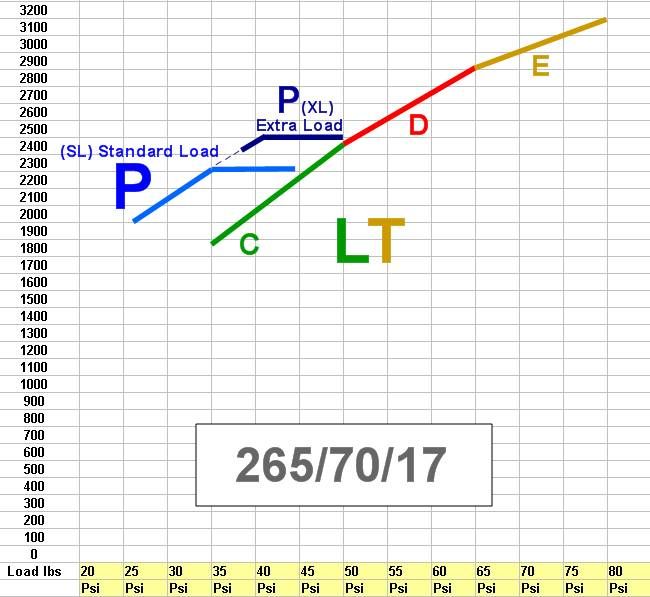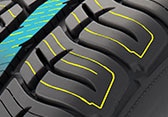Propflux01
$100 Site Donor 2025
Does anyone put LT tires on their SUV, such as a Tuscon or equinox size?
LT tires need more air pressure. ...to match the load capacity of a P-metric tire.* *A Standard Load tire (SL), usually P-metric (or metric, euro-metric -- a nearly identical twin). This is the tire found on nearly every new car, SUV, and Light Truck. On the sidewall it looks like P265/70/17 (or 265/70/17) as opposed to LT265/70/17. How much more pressure?
This continues to come up and is often a source of confusion. Not surprising though, considering that both of the following statements are true: LTs carry less load than P-metric. LTs carry more load than P-metric. Throw Load Range into the discussion and things get nice and tangled. Describing the relationships in words doesn't paint a clear picture so I thought I'd try to make some -- pictures, that is. The charts are based on tire size 265/70/17 and, in the 2nd chart, how it relates to the 5th gen 4Runner because that proved easiest, but the application to other generations is obvious and not too dissimilar. The curves should be reasonably accurate and more than good enough to illustrate the point. P-metric tires get load capacity de-rated 9% when used on an SUV and the curves reflect that. The tables used for reference come from this. Hopefully it's easy to see how an LT can carry both less and more load than P-metric. It's all about air pressure and, for this tire size, it takes about 12psi added to the LT to match the load capacity of the P-metric tire. Hopefully it's also clear how pretty much the only distinction that matters is between P and LT. Load Range doesn't meaningfully affect the choice of air pressure for LT -- unless very high pressures are desired -- since the the longer load E curve is overlapped by the shorter D and C curves.There may, however, be implications for speed capability in the selection of load range. See Baldwin here.

|
What for? Are you planning some light off roading? I can see value if you need it. If you planning to stay on the road, stay with regular tires.Does anyone put LT tires on their SUV, such as a Tuscon or equinox size?
Did it once on a Yukon 4WD and it certainly did not ride as well … maybe you want AT … General has AT P’s up to 275 wide or so …Does anyone put LT tires on their SUV, such as a Tuscon or equinox size?
My understanding is that he is looking for AT tire.There seems to be some confusion in this thread.
First, LT tires are those that have the letters "LT" in front of the tire size. There are no LT's that are the same "size" (meaning the numbers!) that fit Equinoxes and Tucson's. That leads me to believe the OP was referring to either All Terrain tires, or tires not specifically designated for SUV's (or specifically designated for pickup trucks)
Hey there,Does anyone put LT tires on their SUV, such as a Tuscon or equinox size?

